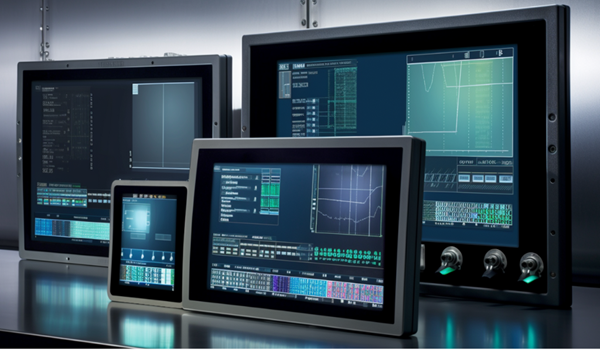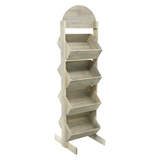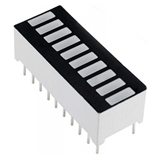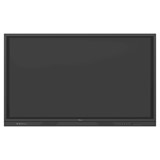HMI (Human-Machine Interface) touch screens and display technology have revolutionized the way we interact with various devices and systems. From smartphones and tablets to industrial machinery and control panels, HMI touch screens have become integral components, offering intuitive and user-friendly interfaces. In this article, we will explore the basics of HMI touch screen and display technology, their benefits, and their diverse applications.
What is HMI Touch Screen and Display Technology?
HMI touch screen and display technology refers to the integration of touch-sensitive screens and visual displays in devices and systems to facilitate user interaction. These touch screens enable users to input commands, navigate through menus, and interact with graphical elements directly on the screen, eliminating the need for physical buttons or controls.
HMI touch screens are designed to provide a user-friendly and intuitive interface, allowing users to interact with devices and systems effortlessly. They utilize various technologies, such as resistive, capacitive, or infrared, to detect touch inputs accurately and provide responsive feedback.


Find the right HMI Touch Screen & Display
Compare quotes from expert Australian suppliers and make the best choice. It's free, quick and easy!
Benefits of HMI Touch Screen and Display Technology
- Intuitive User Interface: HMI touch screens offer a natural and intuitive way of interacting with devices. Users can simply touch icons, buttons, or menus on the screen to initiate commands or access information, making the interface user-friendly and reducing the learning curve.
- Enhanced User Experience: With visually appealing displays and interactive elements, HMI touch screens enhance the overall user experience. Users can easily navigate through menus, view real-time data, and access advanced features, resulting in improved efficiency and productivity.
- Flexibility and Customization: HMI touch screens provide flexibility in design and customization. Developers can create dynamic interfaces, adapt layouts to specific applications, and customize the visual appearance according to user preferences or branding requirements.
- Space and Cost Savings: The integration of touch screens eliminates the need for physical buttons or controls, saving space and reducing manufacturing costs. This is particularly advantageous in compact devices or systems with limited panel space.
- Real-Time Feedback and Visualization: HMI touch screens enable real-time feedback, allowing users to see immediate responses to their inputs. They also facilitate data visualization, displaying graphs, charts, or images to convey information more effectively.
- Accessibility and Multilingual Support: HMI touch screens can accommodate multiple languages and provide accessibility features such as adjustable font sizes or voice commands, making them accessible to a broader range of users.
- Multi-Touch Functionality: Many HMI touch screens support multi-touch functionality, allowing users to perform multiple gestures simultaneously, such as pinch-to-zoom or swipe gestures. Multi-touch capability enhances interaction possibilities and facilitates intuitive manipulation of content.
- Durability: HMI touch screens are designed to withstand frequent use and harsh environments. They are resistant to scratches, smudges, and dust, ensuring long-lasting durability even in demanding applications.
Exploring the Components of an HMI Touch Screen and Display
HMI (Human-Machine Interface) touch screens and displays consist of various components working together to provide an interactive and user-friendly interface. These components contribute to the functionality and performance of the touch screen system. In this article, we will explore the key components of an HMI touch screen and display and their roles in enabling seamless user interaction.
1. Touch Screen Panel
The touch screen panel is the primary component that detects touch inputs. It is constructed using various touch-sensitive technologies, such as resistive, capacitive, or infrared. Each technology has different principles of operation:
- Resistive: Consists of multiple layers with a flexible top layer that deforms upon touch, allowing the contact of conductive layers beneath to register input.
- Capacitive: Utilizes a touch-sensitive layer that stores electrical charges. When a conductive object, such as a finger, touches the screen, it disrupts the electrical field, enabling touch detection.
- Infrared: Employs an array of infrared light beams across the screen's surface. When touched, the interruption of infrared light beams detects the input.
The touch screen panel serves as the interface for users to interact directly with the device or system.
2. Display Panel
The display panel is responsible for presenting visual information to the user. It can be an LCD (Liquid Crystal Display), LED (Light-Emitting Diode), OLED (Organic Light-Emitting Diode), or other display technologies. The display panel showcases menus, icons, images, and other graphical elements that facilitate user interaction.
The quality of the display panel, including factors like resolution, color reproduction, and viewing angles, significantly impacts the user's visual experience.
3. Controller
The touch screen controller is a critical component that translates touch inputs into digital signals. It receives input data from the touch screen panel and processes it to determine the touch location and gesture. The controller communicates with the device or system's main processing unit to execute the corresponding actions based on user inputs.
The controller plays a vital role in ensuring accurate touch detection and responsive feedback.
4. Interface Electronics
The interface electronics connect the touch screen panel, display panel, and controller to the device or system. These electronics facilitate the exchange of data and commands between the components. They ensure proper communication and synchronization, allowing touch inputs to be translated into visual changes on the display.
The interface electronics may include connectors, driver circuits, and cables to establish the necessary connections.
5. Enclosure and Mounting
The enclosure and mounting components provide physical protection and support for the touch screen and display system. The enclosure safeguards the internal components from external elements and potential damage. It also contributes to the overall aesthetics and durability of the device or system.
Mounting options may vary depending on the application. They can include bezels, brackets, or frames that secure the touch screen and display system in place.
Importance of HMI Touch Screens in Industrial Automation
HMI (Human-Machine Interface) touch screens have become indispensable tools in industrial automation, revolutionizing the way operators interact with machinery and control systems. These touch screens offer intuitive and user-friendly interfaces that enhance operational efficiency, productivity, and safety. In this article, we will explore the importance of HMI touch screens in industrial automation and the benefits they bring to the manufacturing environment.
-
Enhanced Operator Interface
HMI touch screens provide an intuitive and visually engaging interface that simplifies complex operations. Operators can interact directly with graphical elements on the screen, such as icons, buttons, and menus, to control machinery, monitor processes, and access critical information. The touch-based interface eliminates the need for physical buttons or knobs, streamlining the operation and reducing the learning curve for operators.
-
Improved Efficiency and Productivity
With HMI touch screens, operators can access real-time data, configure parameters, and make adjustments quickly and accurately. The intuitive interface allows for faster navigation and interaction, enabling operators to respond promptly to changes in the production environment. This improves overall efficiency and productivity by minimizing downtime, optimizing process control, and reducing manual errors.
-
Easy Configuration and Customization
HMI touch screens offer flexibility in terms of configuration and customization. They allow operators and system integrators to tailor the interface to specific manufacturing requirements. Parameters, setpoints, and visual elements can be easily modified to accommodate different processes, machinery, or production lines. This adaptability enables seamless integration with existing automation systems and promotes a user-centric approach to interface design.
-
Real-time Monitoring and Visualization
HMI touch screens enable real-time monitoring and visualization of critical process parameters, production data, and alarms. Operators can easily access and interpret this information through clear and interactive graphical displays. Real-time data visualization helps identify trends, anomalies, or issues promptly, allowing operators to take timely corrective actions. The visual representation of data enhances situational awareness and facilitates decision-making.
-
Enhanced Safety and Diagnostics
HMI touch screens play a crucial role in ensuring the safety of industrial automation systems. They provide operators with clear visibility into the status of machinery, safety interlocks, and emergency stop functions. Alarm notifications and diagnostic messages can be displayed prominently, enabling operators to respond swiftly to potential hazards or malfunctions. HMI touch screens also facilitate the implementation of advanced safety features, such as access control and lockout/tagout procedures.
-
Remote Monitoring and Control
Many HMI touch screens support remote monitoring and control capabilities. This allows supervisors, engineers, or maintenance personnel to access and manage industrial automation systems from remote locations. Remote access reduces the need for physical presence on the shop floor, enabling quicker response times to issues and improving overall maintenance efficiency.
HMI touch screens and display technology have revolutionized user interfaces, offering intuitive interaction and enhancing various devices and systems. They provide benefits such as improved user experience, flexibility, space and cost savings, real-time feedback, accessibility, and durability. The key components include the touchscreen panel, display panel, controller, interface electronics, and enclosure. In industrial automation, HMI touch screens enhance operator interfaces, improve efficiency and productivity, enable customization, support real-time monitoring, enhance safety, and allow remote control. Overall, HMI touch screens have transformed user interaction and improved usability, efficiency, and safety in diverse applications.

-160x160-state_article-rel-cat.png)













